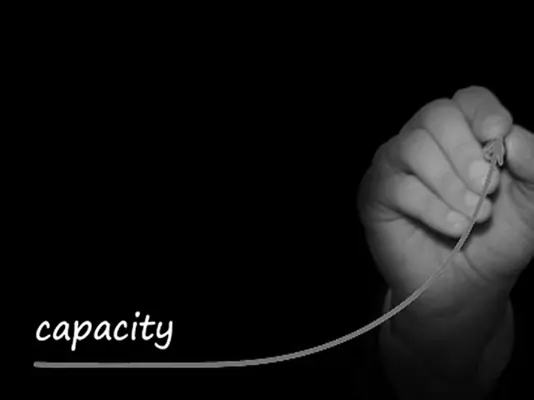The Race from BS IV to BS VI: How to win by solving the woes in Auto R&D
Vivek Chopra

Let’s leapfrog from BS IV to BS VI in three years, the Indian government decided in 2017.
‘That’s impossible!’ the auto industry protested. After all, it took Europe nine years to make this same jump! The feat the government was proposing is akin to conquering Mount Everest in one month (most expeditions take at least 2 months), industry experts opined.
So, what’s prompting such vehement protests?
To answer this, let’s understand the challenges that BS VI poses for an auto company, particularly for its Research and Development function.
Mammoth work content
Context
Many Indian auto companies operate across multiple product categories (ex: cars, bikes, SUVs, trucks etc.), and have built a large portfolio of engines over time. A regulation such as this one requires would affect the entire range of their products. This means that converting all these engine models to BS VI before April 2020 is truly a gargantuan task. The sheer work content itself is overwhelming for conversion to BS VI, since all engine platforms require independent design, validation and homologation activities. In fact, most companies would not have seen these many engine upgrades in their entire history.
Problems
Most R&D organizations do not have a clear assessment of their capacities. This is mainly due to high ‘content variability’ and non-deterministic nature of R&D projects, where each project is different from the previous one. So, the time and effort required to complete a new project may be much different from the previous one and can’t be predicted. This is in sharp contrast to the highly deterministic and repetitive nature of work in operations, where the time taken to process an individual part is known to the last second and therefore, the hourly capacity of a machine is known fairly accurately.
When the R&D department is unclear about how much capacity is enough, and the workload is huge, it tends to take on much more projects than can be handled at a time. Overloading causes R&D to stretch its capacity over many projects and try to do all things simultaneously. The downside of this approach is that while a large number of projects get started, and many move a certain distance, none or only a few of them finish within the regulated deadline. In short, the company gets no return for all the effort invested.
Steep learning curve
Context
A huge shift in technology is needed to meet the demands placed by BS VI norms. Most Indian companies haven’t faced a technological transformation of this magnitude, and that too, requiring completion within such a short time period. In itself, adoption of a new technology is a risky proposition. A hard deadline such as the one set by the government aggravates the situation because of the enormous pressure on resources.
Problems
But, surprisingly, most managers do not see this pressure of time as a problem. In fact, they revel in reviews based on rhetoric around stiff deadlines, believing this factor to be the only driver of speed and the best way to control the many uncertainties in project environments. This couldn’t be further from the truth. It has been seen that in any design and development process, where the achievement of an output depends on completion of a certain scope of activities, and there is pressure to achieve this output fast, the scope or the process itself gets compromised. Ironically, wherever there is scope violation to show faster output, the management tends to overlook it either due to lack of visibility or unwillingness to check. But, such compromises in the fidelity of design and development process, when not caught upfront, eventually lead to production issues on the plant and quality issues in the field.
In regulatory projects like BS VI conversion, where time is short and the management is on an overdrive to meet timelines, the above undesirable consequences are very likely. With so many engines and vehicles being converted to BS VI with such tight deadlines, companies can quickly lose control of the number of issues being generated owing to process non-conformance.
Integration of engine with vehicle
Context
The story never ends with the conversion of an engine to BS VI. After the Proof of Concept (POC) of a BS VI engine is complete, there is still a mountain of integrations and validations awaiting to be done with other non-engine sub-systems of the vehicle variants into which the modified engine goes.
As an entire portfolio of engines have to be converted to BS VI, the physical compatibility of the modified engines with existing vehicle variants/vehicle BOMs (bill of materials) has to be checked. In commercial vehicles segment, where customization is common and vehicle BOMs exist in thousands, this exercise can become overwhelming. Moreover, the functional performance of the overall vehicle with the modified engine cannot be allowed to deteriorate and has to be validated every time an engine is modified.
Problems
Modification of each vehicle variant requires contributions from a large number of teams often working at different locations on different sub-systems. In this process, there may be iterative changes required in engine as well as non-engine parts and systems.
However, when the flow of work is not controlled, it is very easy for engine teams to get lost in the multiplicity of activities to be done on newer engines as they are picked up for POC, and iterations coming from variants already under integration check with non-engine teams. When different non-engine teams also pick up integration work based on their individual preferences and conveniences, the synchronization between them suffers leading to long stoppages in work whenever a team needs help from another. The stoppages cause teams needing help to open up still more work fronts, further worsening the situation.
Escalation in vehicle cost
Context
The biggest challenge by far is the change in pricing dynamics that this initiative will bring about. The overall vehicle BOM cost is expected to increase by at-least 5-10% post BS VI conversion. This sharp spike can wipe off most of the profits of the company if it does not pass on the cost to its consumers. But increasing vehicle prices can result in a sudden dip in sales volume, especially in the non-commercial segment, where consumers can postpone their buying decisions.
Problems
Most auto companies are, therefore, apprehensive about the impact of BS VI on sales volumes. A dip is inevitable, they say, unless the price increase is ‘justified’ by additional features (and not just by improved emission parameters). But these additional features will not only add incremental costs to the vehicle BOM, they will also take up additional R&D capacity for testing and validation. So, the already stretched R&D capacity would be further burdened, and lead times get longer. Given that there is a full portfolio of engine models and corresponding vehicle variants to be converted to BS VI, this entire process may eventually jeopardize the achievement of BS VI deadlines for many companies.
Summary of woes
Enormous work load, a highly uncertain environment and dependence on external suppliers of a typical new product development means that the story of most R&D organizations is already one of multiple conflicts playing out at different levels. But these unresolved conflicts are magnified whenever a regulatory tsunami like BS VI, with its mammoth work content and aggressive deadlines, hits them.
What are these conflicts? Let’s list and describe them, specifically in the context of the challenges mentioned in this article.
Conflict 1
Firstly, a conflict manifests when a large body of work has to be quickly completed- like when a government regulation of BS VI conversion in all engine models is enforced.
- On the one hand, there is the need to ensure full capacity utilization (avoid any starvation in R&D) by loading all resources to the brim.
- On the other hand, there is a need to prevent capacity diversion from important work by carefully controlling the load and identifying work that should not be done.
Conflict 2
The major shift in technology across numerous engines and models within a restricted timeline creates a conflict between:
- The need to meet regulatory deadlines by using aggressive timelines to expedite execution and
- The need to prevent compromises in design and development processes creeping in due to the aggressive timelines (imposed by management through reviews)
Conflict 3
The co-ordination required between many teams working on different sub-systems of the same vehicle variant creates a conflict between:
- Achieving high resource utilization locally, in different R&D teams by letting them take up projects in any manner which suits them best individually and
- Achieving close synchronization between different teams required on the same projects by defining an organization-wide rhythm
Conflict 3
The change in pricing dynamics, and fear of dip in sales post BS VI leads to a conflict between:
- The need to add features in the vehicle to protect sales from dipping post BSVI, (which in turn can lead to higher lead times and greater risks of not meeting deadlines) and
- The need to protect deadlines by limiting the scope of work to bare minimum required for BS VI conversion
Criteria for success
If we are to resolve all the conflicts listed above, we need to create a solution that resolves multiple paradoxes. In other words, we need to have a solution which:
- Minimizes starvation in R&D while preventing overloading and its impact (like causing diversion in capacity)
- Removes the pressure of deadlines from the system while ensuring that resources work at maximum speed
- Maximizes overall resource utilization in R&D while improving synchronization among teams
- Enables addition in project scope in the form of new feature upgrades wherever required to protect sales, while ensuring that deadlines are met despite expansion of scope
Theory of Constraints
Do we have a ‘magical’ solution that can resolve all the above paradoxes at the same time? Yes. Adoption of Theory of Constraints (TOC).
We all know that at the trick behind even astounding acts of magic is a simple diversion. theory of Constraints also, performs this magic in companies by employing some simple principles of systems thinking. The primary elements of TOC solution involve:
- Using a good enough assessment of R&D capacity -for limiting projects being worked upon at a time in the R&D pipeline
- A company-wide priority mechanism covering all teams in R&D, parts development, process engineering, and operations to improve synchronization between individual projects
- Putting a stage-gate mechanism in place to prevent compromises from creeping into the design and development process and
- Managing timelines through high-frequency flow management –for changing the focus from chasing deadlines to achieving speed by managing activity completion
The end result is shorter lead times (of delivery), higher output and more agile response to uncertainties that may creep into individual projects.
Research and development departments that work on these simple principles are very agile and are not only able to manage their regular R&D work smoothly but are also able to respond competently to sudden regulatory requirements like a quick conversion to BS VI.







